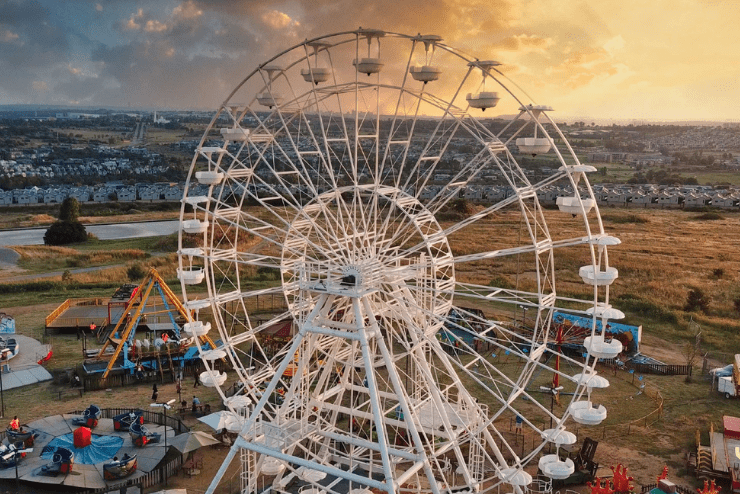How Johannesburg North Attractions can Save You Time, Stress, and Money.
Wiki Article
Not known Facts About Johannesburg North Attractions
Table of ContentsThe Basic Principles Of Johannesburg North Attractions More About Johannesburg North AttractionsSome Of Johannesburg North AttractionsIndicators on Johannesburg North Attractions You Need To KnowThe 25-Second Trick For Johannesburg North AttractionsThings about Johannesburg North Attractions
The city owes its location to the visibility of an even extra precious resource: gold. The city grew on the edge of the Witwatersrand Main Coral reef, a below ground stratum of gold-bearing quartz-silica corporation that arcs for numerous miles beneath the Highveld. Many of the gold mines in the city ceased operation in the 1970s, however in its day the Witwatersrand gold industry represented greater than 40 percent of the world's annual gold production.Johannesburg has a warm environment. Summertime temperature levels average regarding 75 F (24 C); winter temperature levels average about 55 F (13 C) and only occasionally dip below freezing. The city delights in regarding 8 hours of sunshine per day in both winter season and summertime. Rain averages about 28 inches (700 millimetres) per year, yet the complete varies considerably from year to year.
What rain the city gets falls practically solely in the summer season, often in magnificent late-afternoon electric storms. Air contamination positions a significant issue, specifically in the winter months, when thermal inversions impede the westward flow of air from the Indian Sea. Air pollution is most severe in the largely cleared up Black towns on the city's perimeter, where several homeowners still rely on coal for gas.

The Facts About Johannesburg North Attractions Revealed
The balance of the city is occupied by whites. Holiday accommodation differs in character and high quality. Soweto is infamous for its limitless rows of municipally built, two-room matchbox homes, yet it additionally has a couple of flourishing territories along with brimming squatter camps, where 10s of thousands live without water, electrical power, or sanitation centers.Physical growth, although somewhat limited by transport, continued promptly as immigration to South Africa, and Johannesburg in particular, enhanced considerably.
Most bad residential areas were mixed, with inadequate blacks and whites living with each other, although the rich residential areas were usually scheduled for whites.
The approximated populace of the region is 200,000, [] The number of individuals living in the inner city on a casual basis is unknown, as many are unlawful immigrants. A lot of higher-income citizens and white individuals have actually relocated to the north suburban areas and have been replaced by lower-income black individuals. The unemployment, education and learning, and age accounts of the area are all unknown, because of the difficulty of acquiring reliable info concerning the area.
Some Known Incorrect Statements About Johannesburg North Attractions
Centred on the CBD, the region consists of the suburbs of Yeoville, Bellevue, Troyeville, Jeppestown, and Berea to the eastern. To the west it infects Pageview (Johannesburg North attractions) and Fordsburg. There are tiny commercial areas to the south, such as City West-Denver and Benrose. Around 800,000 commuters pass via the central city each day, and it functions as a regional shopping node for visitors from the southern suburbs. Yeoville and Bellevue look at here now have a mix of house buildings and solitary property systems on small whole lots. The area is situated on a hilly divide that runs from eastern to west.
Facts About Johannesburg North Attractions Revealed
R. Tambo International Airport). The eastern suburbs are some of the oldest locations of Johannesburg, there are large neighborhoods of Jewish and various other European histories, most of the population is English speaking. There are three golf programs along with a number of secured ridges with viewsites. There are a number of strong and up-market home entertainment and buying locations in the east such as the Eastgate Shopping Center and the Greenstone mall.The area is primarily composed of old "matchbox" homes, or four-room homes built by the government, that were built to offer economical holiday accommodation for black workers during apartheid. Soweto is an acronym, meaning "South Western Townships". Street after road in this location is lined with matchboxes; however, there are a few smaller locations where thriving Sowetans have constructed residences that are much more similar in stature with those in even more affluent suburbs.
Hostels are another famous physical function of Soweto. Initially built to house male migrant workers, numerous have actually been improved as houses for pairs and family members. The N1 Western Bypass skirts the eastern limit of Soweto. The suburban area was not traditionally allowed to develop employment centres within the location, so mostly all of its residents are travelers to various other parts of the city.
Unknown Facts About Johannesburg North Attractions
The N1 Western Bypass links the northern suburbs with the north-western suburban areas. The houses in the northern suburban areas are mainly formal, without substantial areas of informal real estate, or real estate that lacks a long-term framework. This is an established location, there is a trend of land usage modification from residential to industrial, especially along primary arterial roadways and around well established nodes.The area is well linked to road networks, specifically along the north-south axis developed by the M1 and N1. Roads to the east and west are less well developed, as there are no freeways taking a trip in that direction. Towards the northern boundary of the city, my response the density of advancement decreases, leaving large locations of primitive land around Midrand.
All About Johannesburg North Attractions
, which is situated on a reference hill overlooking the internal city and Hillbrow.Report this wiki page